|
Books Should Be Free Loyal Books Free Public Domain Audiobooks & eBook Downloads |
|
|
Books Should Be Free Loyal Books Free Public Domain Audiobooks & eBook Downloads |
|
Literature |
|---|
|
Book type:
Sort by:
View by:
|
By: Anna Katharine Green (1846-1935) | |
|---|---|
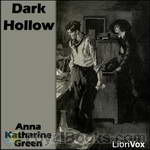 Dark Hollow
Dark Hollow
The small town of Shelby is shaken by a brutal murder. A man by the name of Etheridge was found beaten to death. A local inn-keeper, is convicted and executed for the crime. Many years later, "a woman in purple" shows up at the house of Ostrander, the respected judge who had sentenced the inn-keeper to be executed. This mysterious woman turns out to be the wife of the convicted man, but she does not believe he was guilty. She visits the Judge, to challenge him on his verdict. He listens to her plea, but reaffirms his belief in her husbands guilt... | |
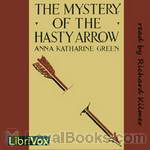 The Mystery of the Hasty Arrow
The Mystery of the Hasty Arrow
It is the noon hour at a museum in New York City. The date: May 23, 1913. The weekday, attendance is light; the attendees are scattered between two floors. Suddenly a cry rings out from the second floor. Scrambling to Section II, the museum director discovers a teenage girl dead with an arrow through her heart. An older woman hovers over her whispering incoherent phrases in the girl's ear and offering incomprehensible answers to the director's questions. She is the only witness to the crime, or accident, as the case may be... | |
 The Bronze Hand
The Bronze Hand
A political society secretly operates in Baltimore. When he tries to help his beautiful neighbor Miss Calhoun recover a stolen ring which might cause great unknown danger, Mr. Abbott is drawn into the midst of the conspiracy. (Introduction by Carolin) | |
 Circular Study
Circular Study
In this well-plotted, character-driven mystery, Detective Gryce receives a cryptic message calling him to the scene of a “strange” crime. He soon finds that the adjective is correct, for in a quiet brownstone house in a respectable New York City neighborhood, he finds the body of a man brutally stabbed to death, yet lovingly laid out on the floor of his study. The only apparent witnesses are a deaf and dumb butler driven mad by the event, and a caged bird that sings out a vital but puzzling clue... | |
 Forsaken Inn
Forsaken Inn
Told from the perspective of a Mrs. Truax, the owner of an inn during the time of the American and French Revolutions, "The Forsaken Inn" is a locked-room mystery that keeps readers guessing about what has happened. A young couple stays at the inn for the night, and goes on their way in the morning ... and several years later, the bride's body is found in a secret room of the inn. Yet, many people saw that bride leave with her husband. How can this be? Green tells her tale through Mrs. Truax' diary, and through letters and discussions with other characters who were friends of the young couple. An entertaining and highly recommended read. | |
 Agatha Webb
Agatha Webb
A universally beloved woman has been murdered. But who would have the heart to kill Agatha Webb? Would her husband do it for money matters? Or would it be the cook, who died at about the same time? Or would it be the rich and well-connected Mr. Fredrick, who ran away into the woods? This work is also for feminist fiction lovers. As the story starts right after the murder, we see how Miss Page, a servant at a rich house who is the sweetheart of the same Mr. Fredrick, wants to join the investigation- and is constantly prevented from doing so by conservative men. | |
 Mayor's Wife
Mayor's Wife
Miss Saunders is out for an adventure. One, which is full of secrets, hints, and half-lies. One, which will require all of her wits. She is to be the companion to the Mayor's wife. The Lady is unhappy, and the reason for her grave unhappiness is more serious than you think. | |
 Filigree Ball
Filigree Ball
[The Moore House] was standing when Washington was a village. It antedates the Capitol and the White House. Built by a man of wealth, it bears to this day the impress of the large ideas and quiet elegance of colonial times; but the shadow which speedily fell across it made it a marked place even in those early days. While it has always escaped the hackneyed epithet of "haunted," families that have moved in have as quickly moved out, giving as their excuse that no happiness was to be found there and that sleep was impossible under its roof... | |
 Chief Legatee
Chief Legatee
"I was married to-day in Grace Church. At the altar my bride--you probably know her name, Miss Georgian Hazen--wore a natural look, and was in all respects, so far as any one could see, a happy woman, satisfied with her choice and pleased with the éclat and elegancies of the occasion. Half-way down the aisle this all changed. I remember the instant perfectly. Her hand was on my arm and I felt it suddenly stiffen. I was not alarmed, but I gave her a quick look and saw that something had happened... | |
 Hermit of ---- Street
Hermit of ---- Street
Delight Hunter spends her days looking out of her window at her handsome but very mysterious and reclusive next door neighbor. She walks straight into a mystery when one day a fire starts in one of the upper rooms of his house and she dashes over to warn him, only to have him lock her in with instructions to let no one else in. Why is he so insistent that no one come in? What secrets are hidden within the walls of this house? | |
 Staircase at the Heart's Delight
Staircase at the Heart's Delight
Detective Ebenezer Gryce tells the story of the case with which he begun his career in 1840. Several wealthy men were drowned and washed ashore in New York City, and the first clue leads to a dubious money lender... | |
By: Eleanor Hallowell Abbott (1872-1958) | |
|---|---|
 The Indiscreet Letter
The Indiscreet Letter
Three fellow travelers on a train enter into a discussion concerning what they would call an ‘indiscreet letter.’ The discussion albeit short, produces some rather interesting revelations during the journey and at journey’s end. | |
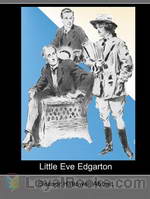 Little Eve Edgarton
Little Eve Edgarton
Eve Edgarton is not who she seems she is. A short encounter with Mr. Barton show that first impressions are not always right or indicative of one’s seemingly obvious preference or one’s proclivity. | |
By: Virginia Woolf (1882-1941) | |
|---|---|
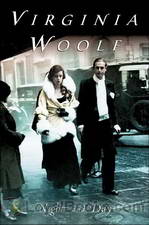 Night and Day
Night and Day
Virginia Woolf is one of the most influential and controversial feminine figures in the literary life of the London society. Night and Day is one of her first novels published in 1919 which displays the moral and spiritual issues that people confront. The author herself was an emotionally unstable person, her episodes of mental illness and suicidal depression being recurrent and always brought into the public attention. The novel revolves around the life of the main character, Katherine Hilbery, a superb girl, free spirited and living in her twenties... | |
 The Voyage Out
The Voyage Out
The Voyage Out is the first novel by Virginia Woolf, published in 1915 by Duckworth; and published in the U.S. in 1920 by Doran. One of Woolf's wittiest social satires.Rachel Vinrace embarks for South America on her father's ship and is launched on a course of self-discovery in a kind of modern mythical voyage. The mismatched jumble of passengers provide Woolf with an opportunity to satirize Edwardian life. The novel introduces Clarissa Dalloway, the central character of Woolf's later novel, Mrs... | |
 Jacob's Room
Jacob's Room
The novel centers, in a very ambiguous way, around the life story of the protagonist Jacob Flanders, and is presented entirely by the impressions other characters have of Jacob [except for those times when we do indeed get Jacob's perspective]. Thus, although it could be said that the book is primarily a character study and has little in the way of plot or background, the narrative is constructed as a void in place of the central character, if indeed the novel can be said to have a 'protagonist' in conventional terms. Motifs of emptiness and absence haunt the novel and establish its elegiac feel. | |
 Monday or Tuesday
Monday or Tuesday
Adeline Virginia Woolf was an English author, essayist, publisher, and writer of short stories, regarded as one of the foremost modernist literary figures of the twentieth century. During the interwar period, Woolf was a significant figure in London literary society and a member of the Bloomsbury Group. Her most famous works include the novels Mrs. Dalloway (1925), To the Lighthouse (1927), and Orlando (1928), and the book-length essay A Room of One's Own (1929), with its famous dictum, "A woman must have money and a room of her own if she is to write fiction... | |
By: John Galsworthy (1867-1933) | |
|---|---|
 The Man of Property
The Man of Property
The first book in Galsworthy’s trilogy, The Forsyte Saga, The Man of Property revolves around the lives of the Forsytes, a self-conceited and cold family, who place a high value on propagating money and rising from their yeoman roots. The novel chronicles the events that lead to their inevitable demise, which is instigated by the stuffy man of property, Soames Forsyte, as he pursues the ideals of the preceding generation, whilst maintaining his own obsession with ownership. At the same time, Galsworthy candidly criticizes the values of the upper-middle classes, by means of satire, irony, a mixed array of realistic characters, an evocative setting, and an intricate plot... | |
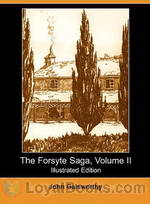 In Chancery (Vol. 2 of The Forsyte Saga)
In Chancery (Vol. 2 of The Forsyte Saga)
‘The Forsyte Saga’ is the story of a wealthy London family stretching from the eighteen-eighties until the nineteen-twenties. In Chancery is the second book in the saga. Five years have passed since Irene left Soames and the death of Bosinney. Old Jolyon meets Irene and is enchanted by her. At his death he leaves her a legacy sufficient for her to live an independent life in Paris. Soames, who is desperate for a son, attempts to effect a rapprochement but is rejected by her. Meanwhile Young Jolyon, now a widower who is Irene’s trustee, falls in love with her... | |
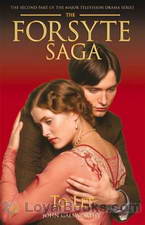 To Let (Vol. 3 of The Forsyte Saga)
To Let (Vol. 3 of The Forsyte Saga)
‘The Forsyte Saga’ is the story of a wealthy London family stretching from the eighteen-eighties until the nineteen-twenties. To Let is the third and final book in the saga (although Galsworthy later published two further trilogies which extend the story). We are now in 1920, about twenty years since Irene married Young Jolyon and gave birth to John and since Soames married Annette, who gave him a daughter, Fleur. The two sides of the family have not met since those times and John and Fleur do not even know of each other’s existence... | |
 Five Tales
Five Tales
This 1918 book consists of five short stories or novelettes by Galsworthy. They are The First and Last (1914), A Stoic, The Apple Tree (1916), The Juryman, Indian Summer of a Forsyte (1918) This last became part of the trilogy The Forsyte Saga. (Introduction by David Wales) | |
 Beyond
Beyond
Gyp, the daughter of ex-Major Charles Claire Winton, at the age of 23 marries Fiorsen, a Swedish violin virtuoso. Her mother, the wife of another man, has been Winton's mistress; she had died when Gyp was born. A highly sensitive child, Gyp has grown up in isolated surroundings with a kind, but very British, father. As she gets older her father tries to introduce her into society. An attack of gout takes him to Wiesbaden for a cure and, as he never goes anywhere without her, she accompanies him... | |
 Skin Game
Skin Game
A small play in three acts. A kind of comic tragedy. The plot tells the story of the interaction between two very different families in rural England just after the end of the First World War. Squire Hillcrist lives in the manor house where his family has lived for generations. He has a daughter, Jill, who is in her late teens; and a wife, Amy, as well as servants and retainers. He is "old money", although his finances are at a bit of low ebb. The other family is the "nouveau riche" Hornblowers,... | |
By: Kurt Vonnegut (1922-2007) | |
|---|---|
 2 B R 0 2 B
2 B R 0 2 B
In this chilling short-story by a master of the craft, Kurt Vonnegut creates a fictional world of the future where life and death are no longer matters of individual choice or destiny. The title refers to the famous quote from Hamlet, “To be or not to be....” with “0” being pronounced as “naught.” It also refers to the eternal dilemma of life and death that face every human being at some point in their lives. Written in 1962 it is set in some unspecified time in the future, when earth has become a Utopia... | |
By: Henry Wadsworth Longfellow | |
|---|---|
 Hiawatha
Hiawatha
I sing the Song of Hiawatha,Brave of heart and strong of arm.Daughter’s son of old Nokomis,Fathered by the harsh West Wind. With its regular, beating rhythm, the Song of Hiawatha has often been parodied, but in truth, it is a powerful, emotional epic; a hero’s life, his loves and suffering. The legends and traditions of the North American Indian swirl together through the tale like a mountain stream, tumbling white over the rocks, and caressing the mossy tree roots. | |
 Evangeline
Evangeline
Evangeline is one of Longfellow’s most popular poems and was once a great favorite with the American people. For many years almost every school child studied this poem during the middle school years. Although the decline of the reputation of the once-idolized poet has also brought neglect to this classic, it is still a very touching and expertly written work of art. It is based upon the tragic expulsion of the French settlers from Acadia (located in the Canadian maritime provinces) during the French & Indian War (1754-1763)... | |
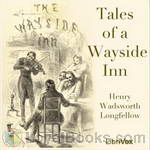 Tales of a Wayside Inn
Tales of a Wayside Inn
Mostly a collection of story-telling poems told by a group of friends in a tavern late one night. "Tales" includes the famous Paul Revere's ride, together with poems of many tales, countries and styles. | |
By: Gustave Flaubert (1821-1880) | |
|---|---|
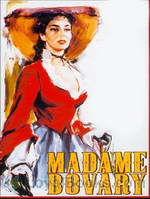 Madame Bovary
Madame Bovary
The strands woven together in Gustave Flaubert's famous, path breaking 1856 novel Madame Bovary include a provincial town in Normandy, France, a shy young doctor with an indifferent career and a lovely young woman who lives in a fantasy world based on the innumerable romantic novels she reads. Of course there is also the story of a dull marriage punctuated by passionate, adulterous love affairs. First published in serial form in a Parisian magazine and deemed to be the “perfect” novel, Flaubert's debut was received by both readers and critics with acclaim and admiration... | |
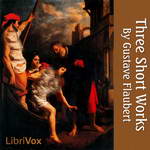 Three Short Works
Three Short Works
Here is a collection of strikingly different pieces by Flaubert: a prose poem in the voices of Death, Satan and Nero; the trials and apotheosis of a medieval saint; and the life of a selfless maid in 19th century France. Each exhibits the vigorous exactness, and the mixture of realism and romanticism, for which Flaubert is renowned. | |
 Salammbô
Salammbô
After completing the famous Mme Bovary, Flaubert put all his efforts into researching the Punic Wars and completed the lesser known Salammbô. In this volume, Flaubert describes in detail the Mercenary Revolt and the fight of the Mercenaries against the all-powerful Carthage, the theft of the magical Zaimph and the love and hate between the Carthaginian princess Salammbô and the fiercest leader of the Mercenaries, Matho. | |
By: John Donne (1572-1631) | |
|---|---|
 Devotions upon Emergent Occasions
Devotions upon Emergent Occasions
Devotions upon Emergent Occasions is a 1624 prose work by the English writer John Donne. It is a series of reflections that were written as Donne recovered from a serious illness, believed to be either typhus or relapsing fever. (Donne does not clearly identify the disease in his text.) The work consists of twenty-three parts describing each stage of the sickness. Each part is further divided into a Meditation, an Expostulation, and a Prayer. The seventeenth meditation is perhaps the best-known part of the work... | |
By: Honoré de Balzac (1799-1850) | |
|---|---|
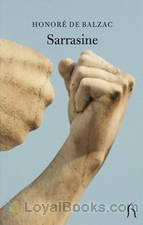 Sarrasine
Sarrasine
Published by Honoré de Balzac in the tempestuous year of 1830, the tale follows the undulating pathways of Sarrasine the sculptor’s shocking journey to his coming of age. As one of the “fathers of realism” Balzac painted with his words a vivid portrait of life in the swirling salons of Europe at the end of the Bourbon monarchy, and we follow Sarrasine from France to Italy in search of both his métier and his muse.However it is also the story of La Zambinella, an Italian singer with whom Sarrasine falls madly and passionately in love. But that passion holds a secret which Sarrasine spies too late. | |